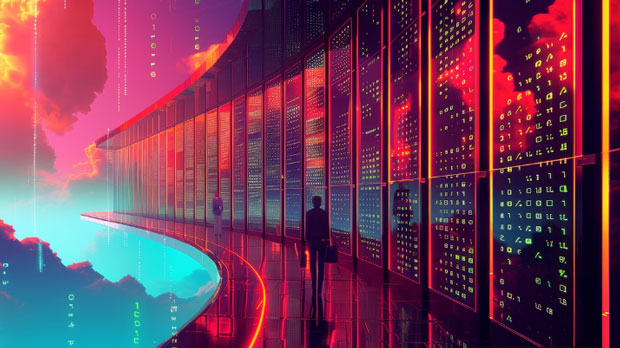When considering a proxy service, the pricing model plays a crucial role in determining the overall cost-effectiveness. Two prominent players in the proxy market offer distinct pricing structures. While both provide high-quality services, their approach to pricing varies significantly. One relies on a pay-as-you-go model, charging clients based on their usage, while the other operates on a subscription-based plan, where clients pay a fixed amount regardless of their consumption. This article will analyze the key differences between these pricing models, evaluate which provides better value for customers, and provide insights into which option offers a higher cost-to-performance ratio. 1. The Core Differences in Pricing StructuresThe two pricing models in question diverge fundamentally in their approach to billing clients. On one hand, there is the pay-as-you-go model, which is a usage-based structure. This means that customers are billed according to how much data they consume or how many requests they make. The more you use, the higher your costs. This model is highly flexible and scalable, ideal for businesses that have fluctuating needs or want to avoid committing to large, upfront payments.On the other hand, the subscription model charges clients a fixed monthly or yearly fee. The cost is consistent, regardless of how much the service is used. This offers predictability and is often chosen by companies that need a stable, ongoing proxy service for continuous operations.2. Flexibility vs. Predictability: Which Model Works Best?One of the key advantages of a pay-as-you-go model is flexibility. Businesses that only need proxy services during specific periods, or those with seasonal spikes in demand, can take advantage of this model to control costs. For example, an e-commerce platform may only need proxy services during sales periods, thus avoiding the unnecessary cost of a subscription plan during off-peak times.However, this flexibility comes with a potential downside: unpredictability. If the usage spikes unexpectedly, it can lead to higher costs than anticipated. Therefore, businesses must closely monitor usage to avoid exceeding their budget.In contrast, the subscription-based model is often preferred by businesses that require a stable, ongoing proxy service. The major advantage here is predictability. With a fixed monthly or annual fee, clients know exactly how much they’ll be paying, allowing for easier budget management. However, it can be less cost-effective for businesses with fluctuating usage. For instance, a company might end up paying for more capacity than it actually needs, resulting in unused resources and wasted money.3. Value for Money: Is One Model More Cost-Effective?When evaluating the cost-effectiveness of each model, it is important to consider the nature of the business and its specific needs. The pay-as-you-go model may be more cost-effective for businesses that experience variable usage patterns. If a company only requires proxies for a few hours or days per month, paying for the actual usage will likely result in lower costs compared to a subscription plan that may offer more capacity than needed.However, the subscription model can offer significant value for businesses that rely heavily on proxy services and require consistent access. For example, large corporations with global operations may benefit from the predictable costs of a subscription model, especially if their usage levels remain steady throughout the year. In such cases, the subscription provides a more reliable, long-term value.4. Key Considerations for Choosing the Right Pricing ModelSeveral factors should be considered when choosing between these two pricing models, and making the right decision depends largely on the company’s specific use case. - Usage Volume: If your business experiences high and consistent traffic or data requirements, a subscription plan may be more economical in the long run. Conversely, for companies with irregular proxy needs, a pay-as-you-go model could result in lower costs. - Scalability: Pay-as-you-go models often allow for greater scalability, as businesses can increase or decrease their usage without changing their contract. This is ideal for companies that expect to expand or contract their operations rapidly.- Budget Stability: If predictable monthly costs are a priority, a subscription model may offer more peace of mind. With fixed costs, there are fewer concerns about unexpected surges in demand.- Service Level Agreement (SLA): Depending on the service provider, the level of support, uptime guarantees, and additional features may differ based on the pricing model. Some subscription models may include premium features like higher speed or security, which could justify the higher upfront cost.5. How Usage Affects the Overall Cost-EffectivenessA critical element in comparing the two models is how usage affects the total cost. As mentioned, a pay-as-you-go model is heavily reliant on the volume of data or number of requests. Therefore, businesses that require minimal or irregular proxy usage stand to save more with this model. In contrast, if your business uses proxies consistently, the subscription model can offer long-term savings, especially if you negotiate a deal that aligns with your needs.For instance, if a company uses proxies for large-scale web scraping projects, frequent access to geo-specific content, or constant market research, a subscription-based model may deliver a more predictable and ultimately more cost-effective solution. However, if the proxy requirements are only needed for a few hours per day or a few times per week, then the pay-as-you-go model could offer significant savings by charging only for actual usage.6. The Impact of Additional Features on PricingBoth models may include additional features, such as the number of IPs available, the type of proxies (residential or datacenter), and security features like encryption or authentication. These features are often priced separately and may affect the overall cost of the service. For instance, while a pay-as-you-go model might charge based on usage, it may also provide more flexibility with these add-ons, allowing customers to opt for additional services only when needed.In contrast, subscription plans may include these features in the overall price, meaning customers may have access to a broader set of services without paying extra for them. However, some subscription plans may also limit access to advanced features, so it is important to read the terms carefully before committing.7. Conclusion: Which Pricing Model Offers Better Value?Ultimately, the best pricing model depends on the nature and needs of the business. For companies with highly variable or intermittent proxy usage, the pay-as-you-go model can offer excellent value by allowing businesses to pay only for what they use. This is ideal for startups, small businesses, or those with fluctuating needs. However, for larger businesses with consistent and ongoing proxy usage, a subscription-based pricing model may offer better overall value, providing more predictability and the potential for long-term savings.In conclusion, the choice between pay-as-you-go and subscription pricing models should be made based on factors such as usage volume, budget predictability, and the need for additional features. By carefully evaluating these factors, businesses can select the most cost-effective solution that meets their specific proxy service requirements.
Apr 02, 2025
![arrow]()




























































